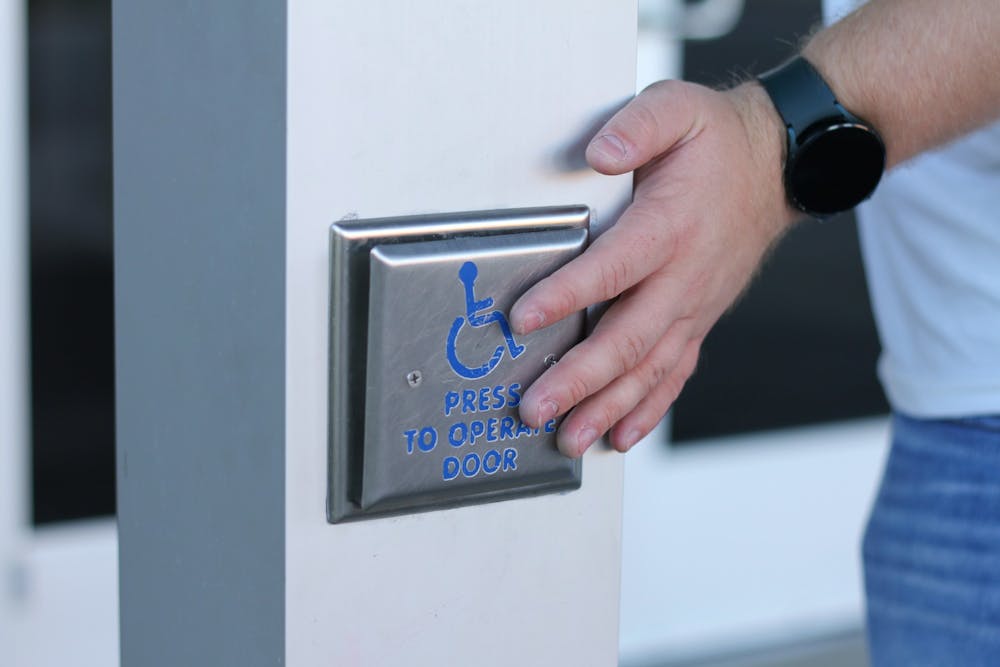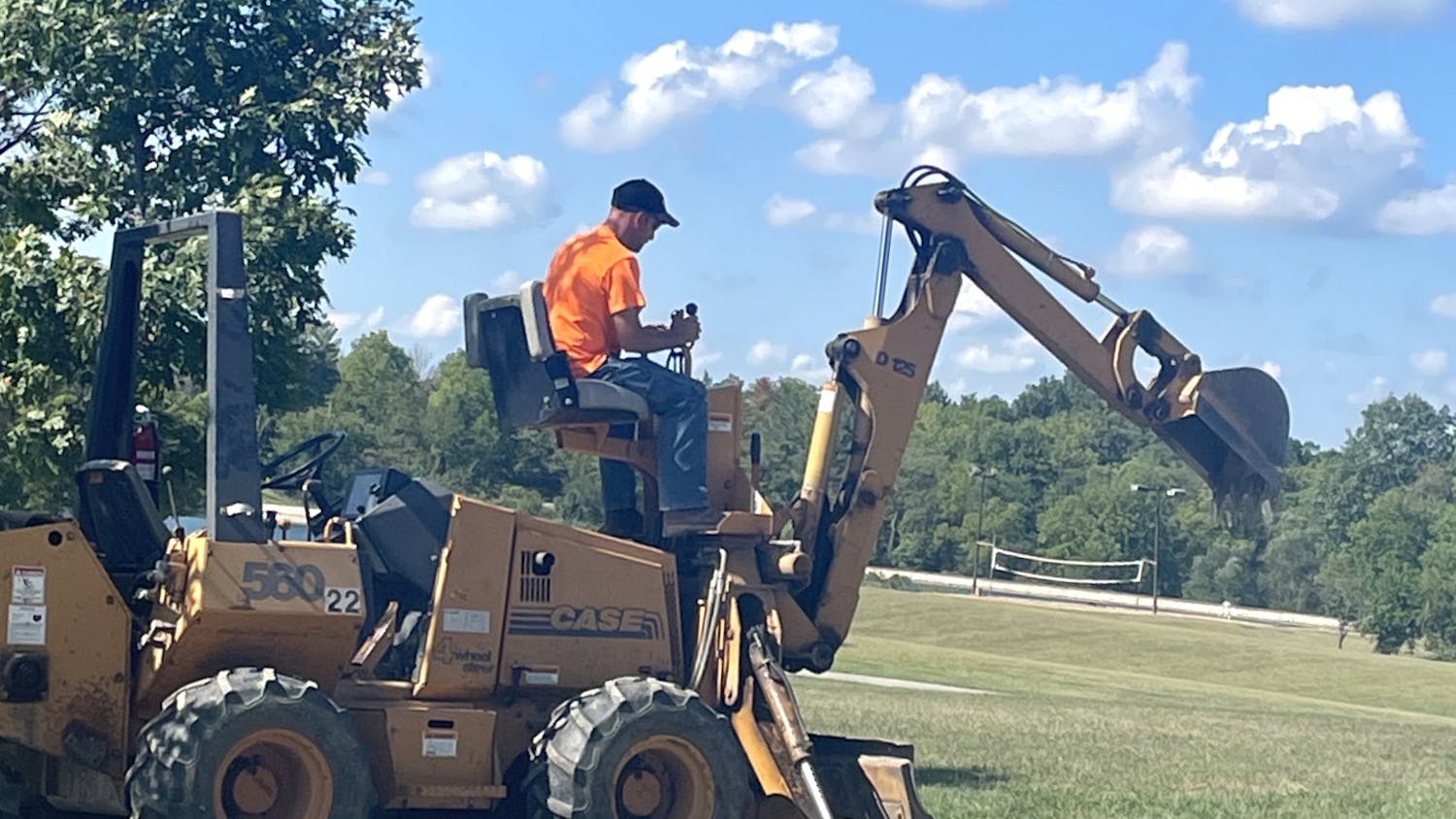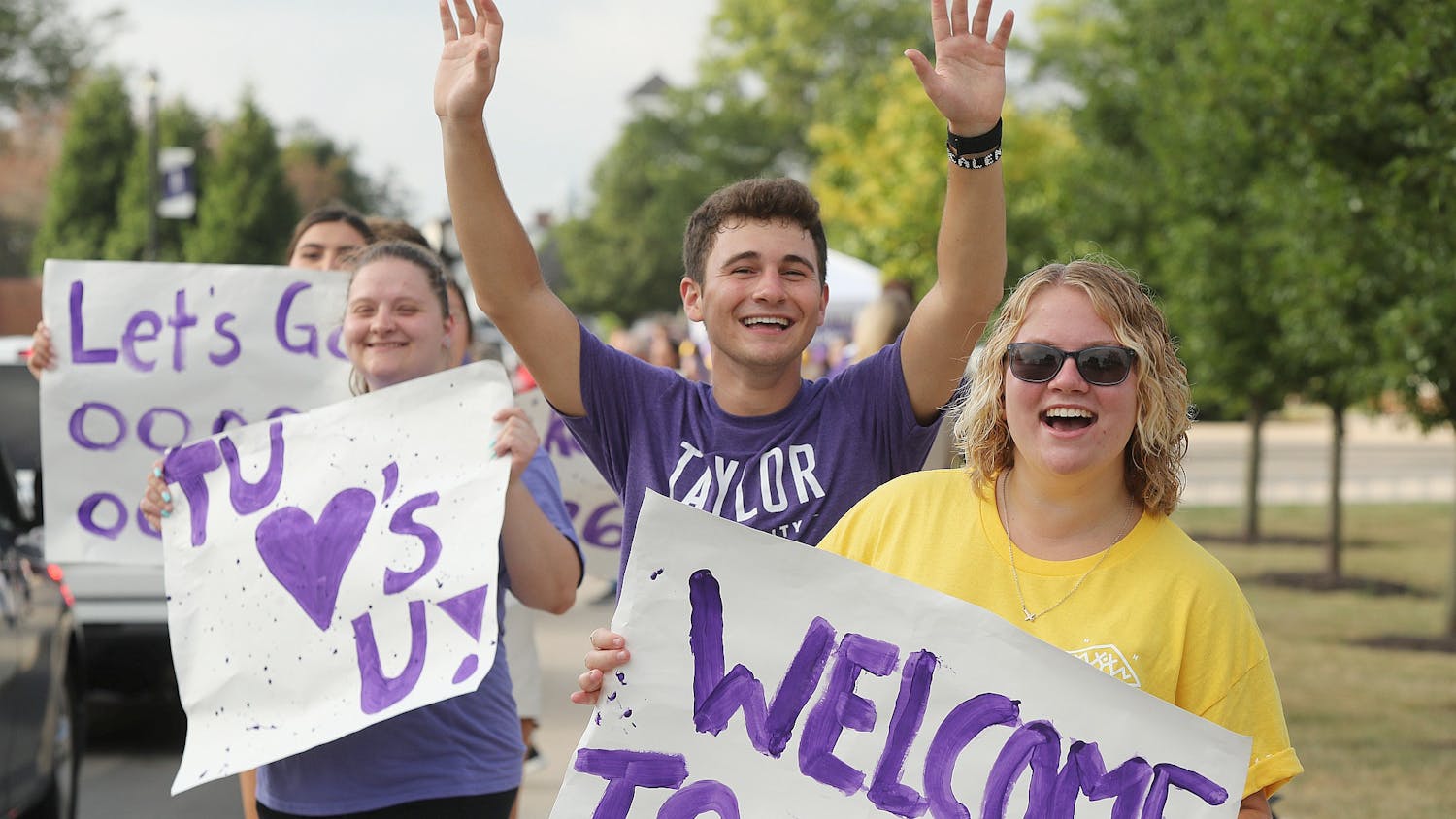While accessibility is a broad term that can refer to a wide range of needs and experiences, this article primarily explores the importance of creating physical spaces and environments that are welcoming to individuals with mobility impairments — a term that encompasses a wide range of disabilities which limit function of movement.
On a campus where the majority of existing facilities predate the Americans with Disabilities Act (ADA), accessibility is a complex issue.
Born of civil rights campaigns and passed into law in 1990, the ADA prohibits discrimination against individuals with disabilities. Institutions like Taylor University are required to provide equal access to educational opportunities and programs in compliance with ADA regulations — access that is secured, in part, by the intentional construction and design of physical spaces.
On the whole, Taylor seeks to follow and implement ADA guidelines, improving access across campus as time and resources allow.
“Taylor students should expect … equal access across campus and compliance with ADA expectation,” Assistant Director of the Academic Enrichment Center and Coordinator of Academic Support Scott Barrett said. “As the Coordinator of Academic Support, I have a role with students in working to help make sure that students have equal access and are provided reasonable accommodations.”
The university’s efforts to build a campus that is both accessible and welcoming are currently shaped by limited resources, coupled with an ongoing need for intentional communication and an awareness of the individual accommodations required by those with mobility impairments.
Director of Facilities Services Gregg Holloway and Special Assistant to the President Ron Sutherland acknowledge that limited resources are one of the most significant factors preventing accessibility improvements across campus.
“The challenge that we’re always going to have is costs involved,” Sutherland said.
As executive overseer of the university’s facility services and construction, Sutherland notes that every project — including ones related to accessibility concerns — falls within the limitations of the annual budget, set aside for the facilities team to make repairs and replacements. These financial constraints, together with a construction crew that is currently understaffed, determine the university’s ability to engage accessibility projects.
According to Chief Information Officer Chris Jones, inter-departmental communication has also proved to be an unexpected hurdle as Taylor seeks to accommodate individuals with mobility impairments.
Projects like improving card-swipe access to campus facilities bridge several departments and rely on consistent, proactive communication between multiple players in order to succeed.
A dependency on communication shapes not only departmental responses to accessibility needs, but the university’s awareness of accessibility as a whole. Holloway notes that communication from grounds and maintenance teams, along with students who experience mobility impairments, is critical.
“We do, in a lot of ways, still rely on other sets of eyes looking at things and saying, ‘Hey, what about this?’” Holloway said. “Particularly when we do get students with challenges that come to campus…that’s a much appreciated set of eyes looking at things and saying, ‘Hey, “I’ve had this difficulty with the way things are set up.’”
Yet despite dated buildings, limited resources and occasional gaps in communication, the most significant challenge Taylor faces when considering accessibility on campus is the individual nature of mobility impairments.
Mobility impairments — as stated above, a term encompassing a wide range of disabilities that limit function of movement — are diverse in nature. This reality means that individuals with mobility impairments have unique experiences with accessibility at an institution like Taylor.
Freshman Jonathan Oliver, who relies on his wheelchair to navigate sidewalks and buildings across campus, has had an overwhelmingly positive experience since moving to college.
Before committing to Taylor, Oliver met with Barrett from the Academic Enrichment Center (AEC) to discuss accessibility concerns. This initial conversation gave Oliver a sense of support and direction as Barrett outlined the university’s accessibility protocol and recommended specific housing opportunities for Oliver to explore.
“I kind of was coming at (the conversation) with an open mind,” Oliver said. “And they seemed like if I ever ran into a problem, then they’d be there to make sure that problem was solved or best accommodated.”
Oliver continues to communicate accessibility needs and improvements with the university.
So far, he has been impressed with quick responses and the university’s efforts to proactively communicate potential accessibility issues.
“They really are on top of making sure that everything is accessible and easy for my use,” Oliver said. “The only big thing (that has come up) — and they gave me a heads-up before I got here — was that the D.C. lift had been broken.”
However, Oliver’s individual experience is simply that — an individual’s experience.
Another student with mobility limitations at Taylor, whose name is not included for cyber-security reasons, has had a largely negative experience navigating accessibility issues.
Since setting foot on campus, a series of small frustrations and poor communication has defined this student’s time at Taylor. Soap dispensers and controls to open the doors that are poorly placed, new drink machines with buttons rather than levers that could be more easily reached — the list goes on.
Most of these situations are characterized by small things that are easily overlooked by those who do not have to navigate campus with mobility limitations in mind. Yet when communicated to the university, this student felt responses were slow and the issues were sometimes discarded as trivial.
Two individuals with diverse experiences: a reminder that individual needs require a degree of attention that is not always addressed by broad regulations or a compliance to generic accessibility codes.
“For different individuals, altering access to offer equal opportunity for use and enjoyment may require different alterations to our current practice and culture,” Barrett said. “What accessibility looks like for someone who has dyslexia, ADHD, who has a hearing impairment, is autistic, is blind, or uses a wheelchair will all look different, but this can all be thought of in terms of accessibility.”
Though it will continue to take time and intentionality, Taylor has already taken significant steps toward creating a campus and culture that are both accessible and welcoming.
Beyond individual tours and conversations with prospective students, the AEC continues to offer support to students visiting campus or attending the university. The AEC, along with the IT department and those in charge of facilities, maintains an open-door policy, encouraging ongoing communication about concerns and areas for improvement.
As Taylor continues to navigate limited resources, gaps in communication and individual needs, the university continues to foster conversations surrounding accessibility on campus.
“It is worthwhile for us to practice putting ourselves in the shoes of others. This will help us to see and understand their experiences,” Barrett said. “We often view people who are different than us as the other rather than as equals, this certainly has been the case for individuals with disabilities. Many times we don’t know what we don’t know, so reading, thinking, and opening our eyes to the experiences of others is critical.”





